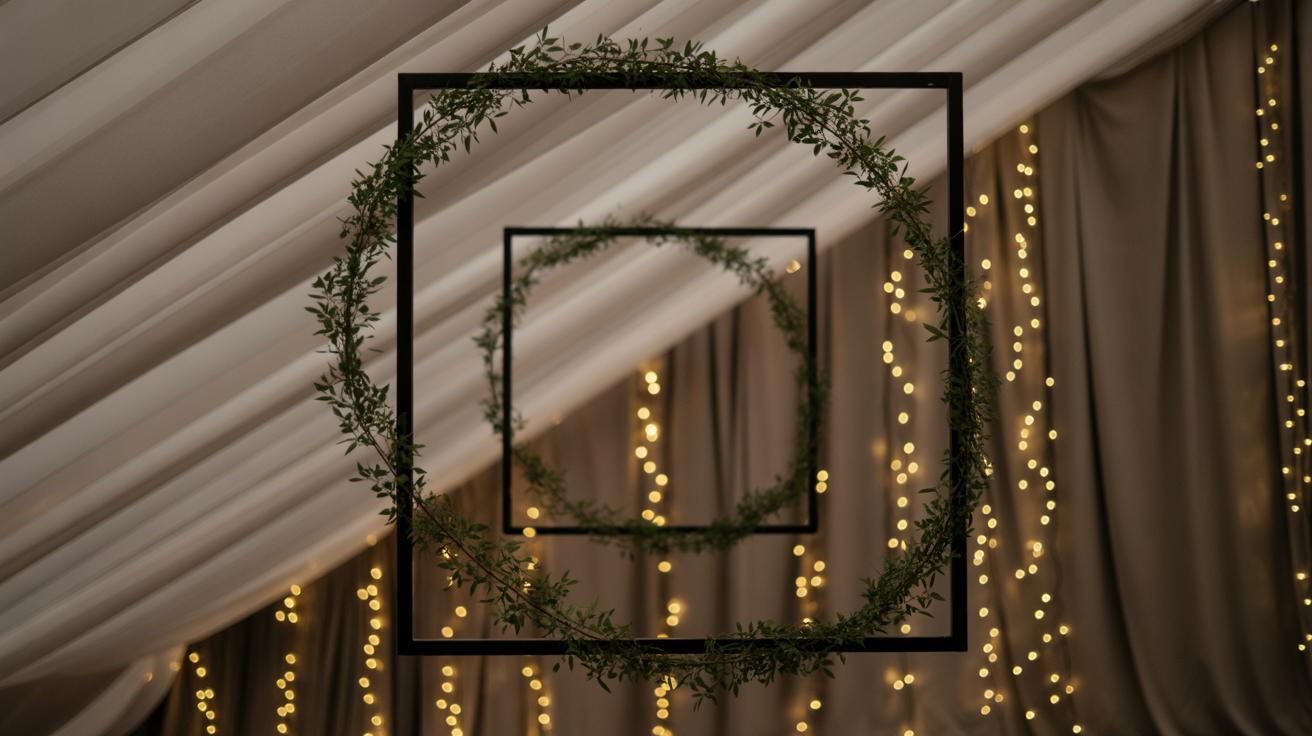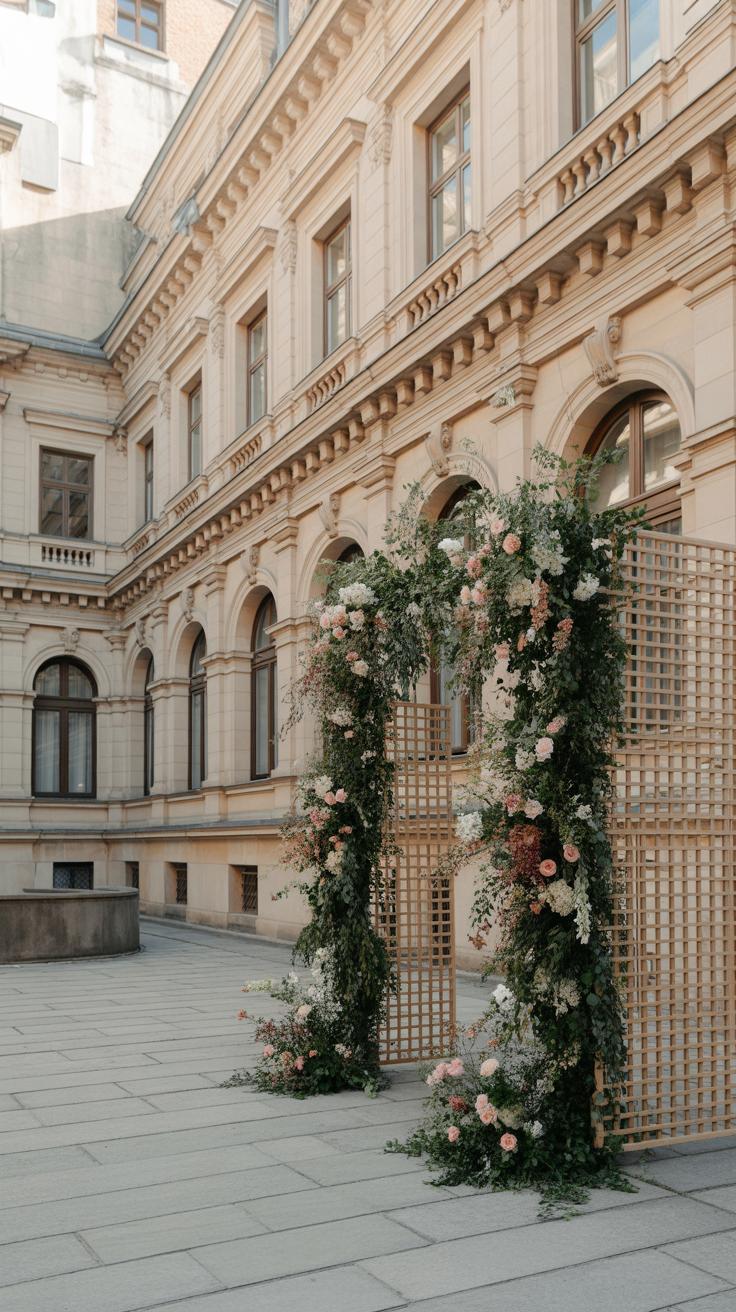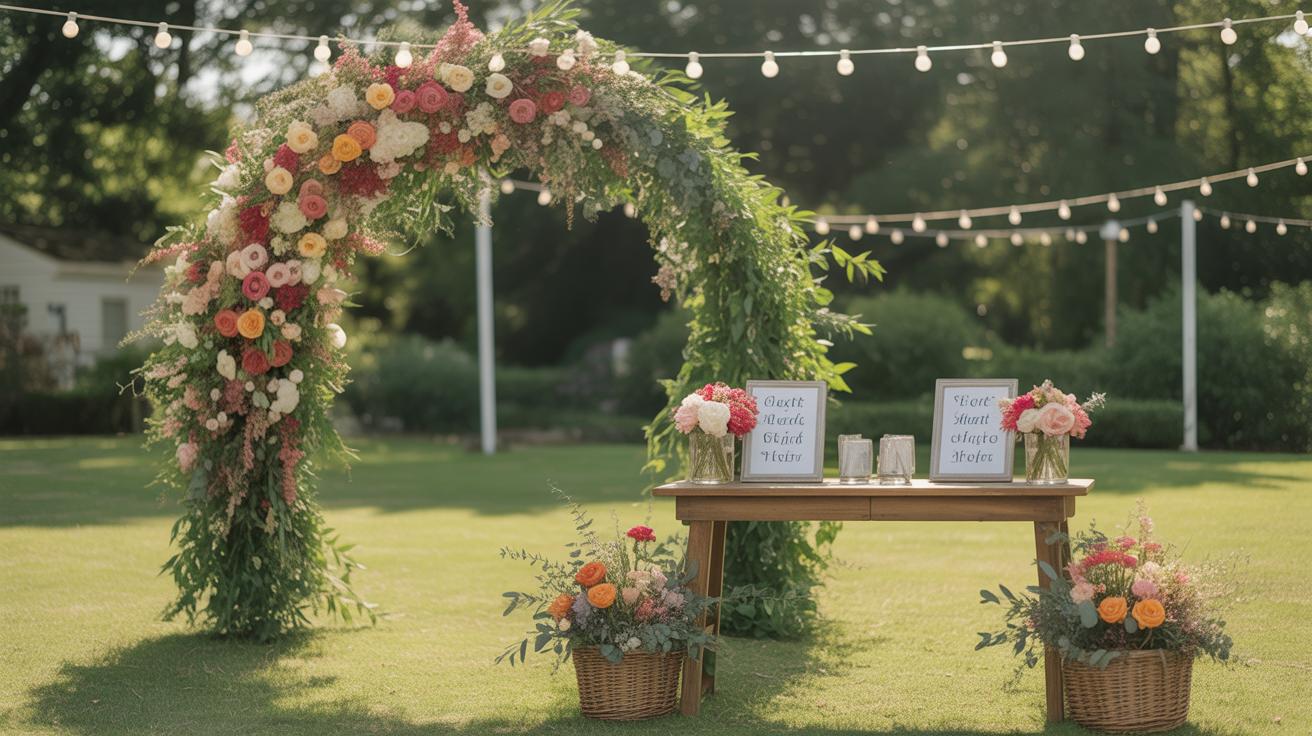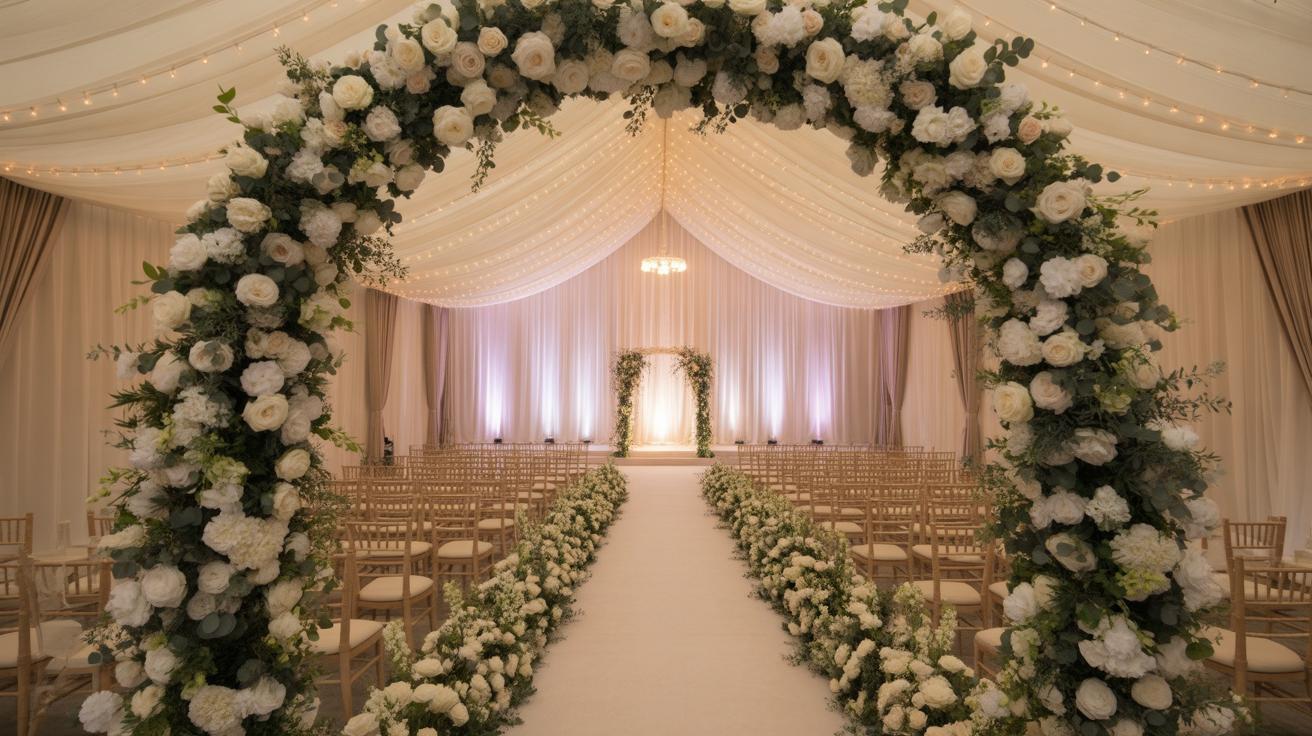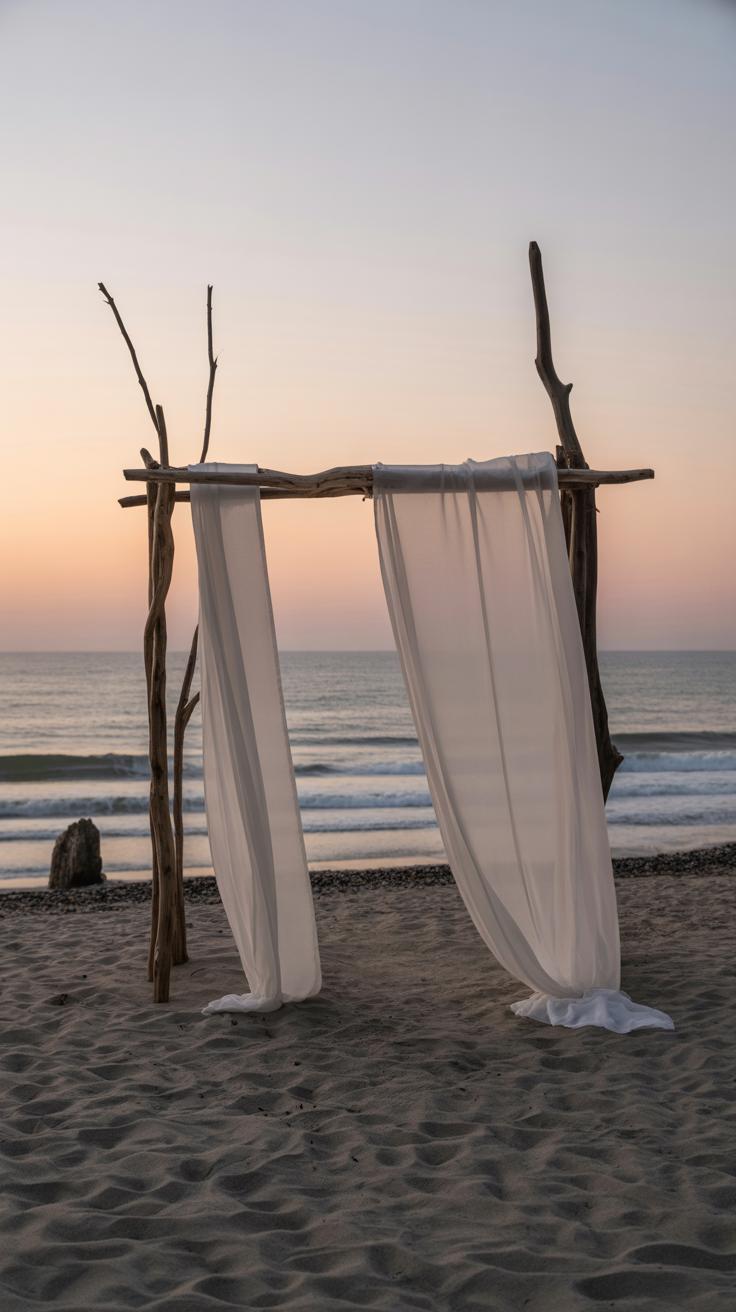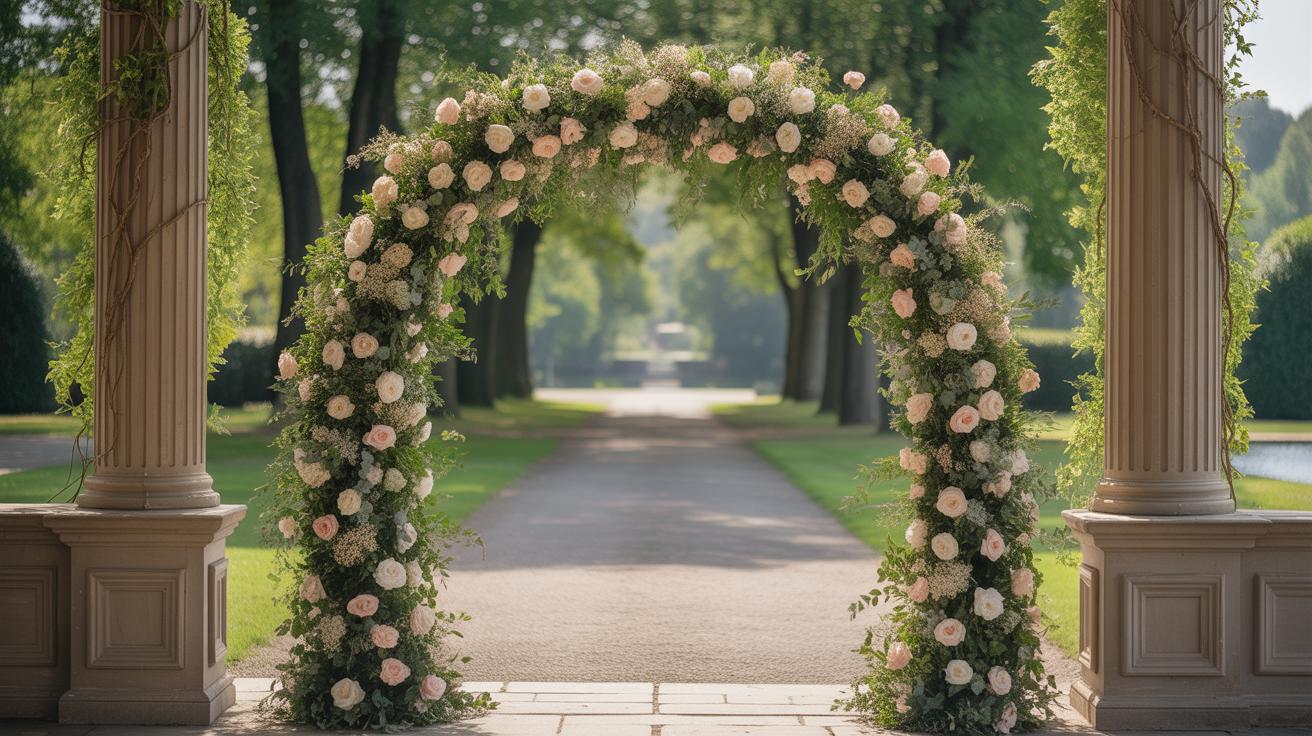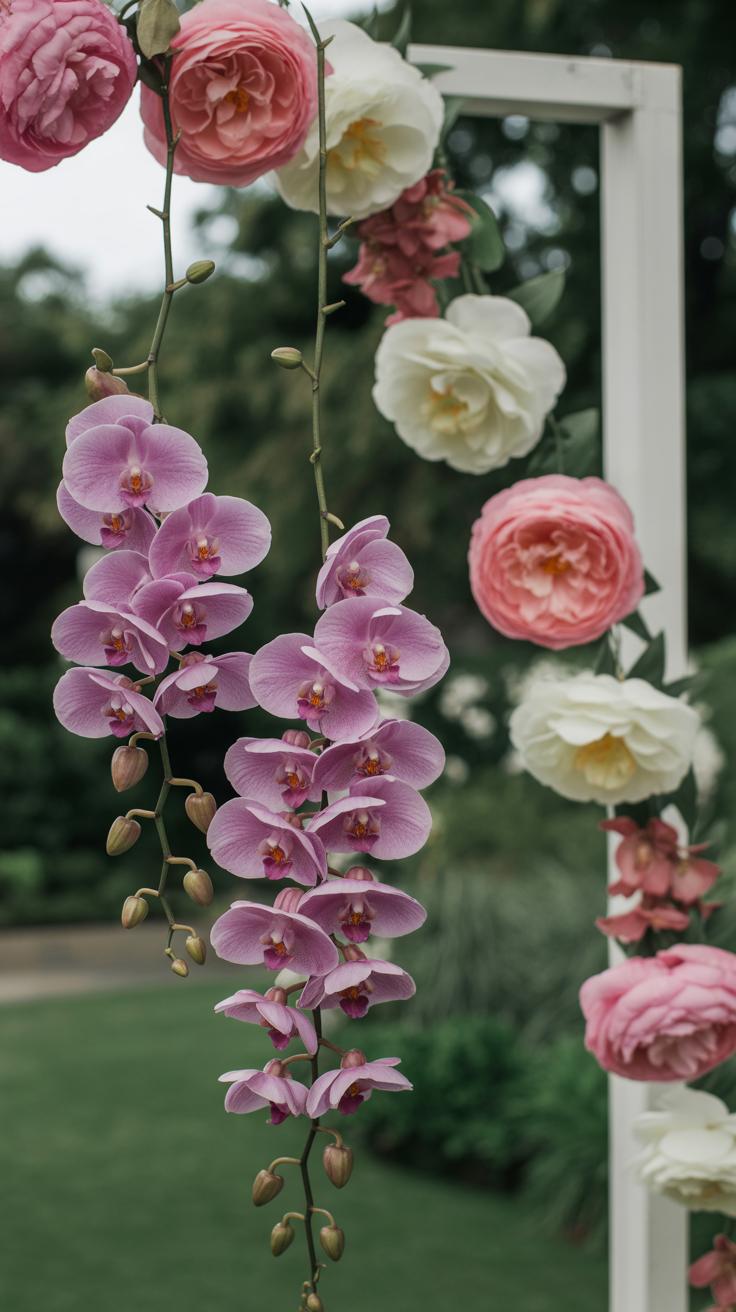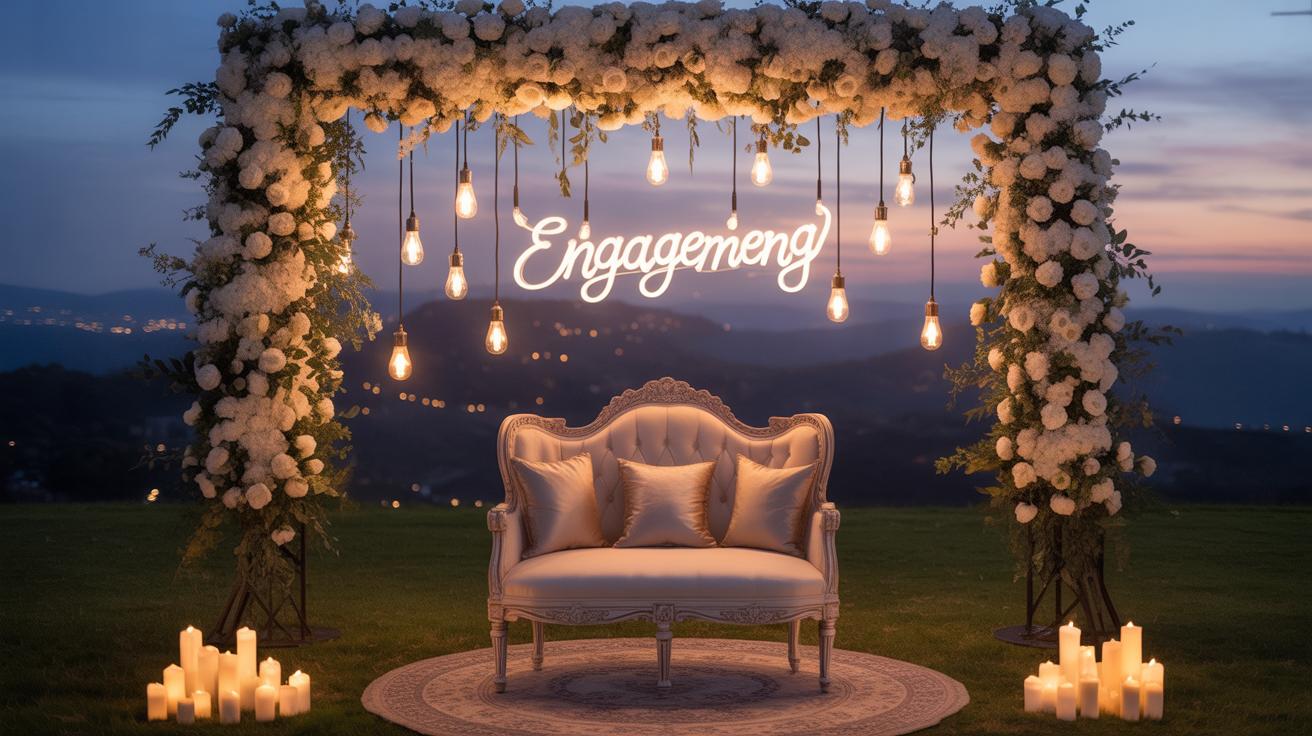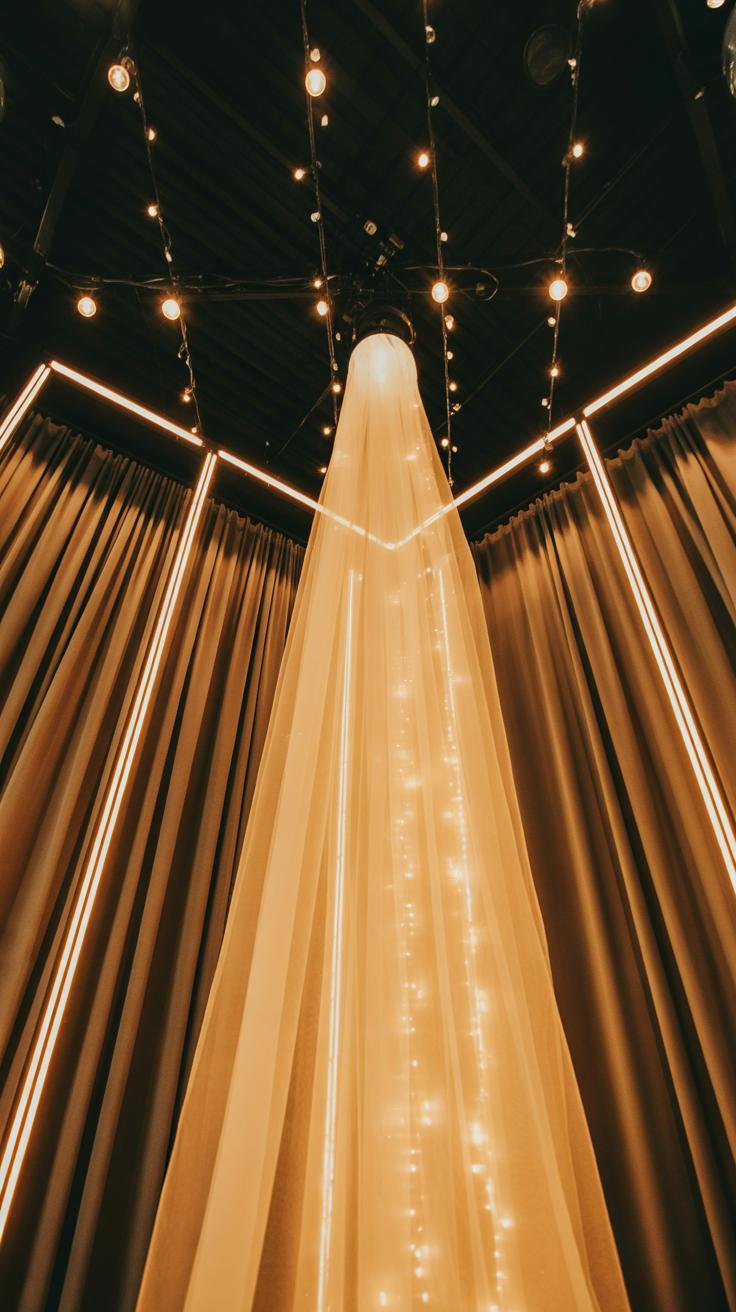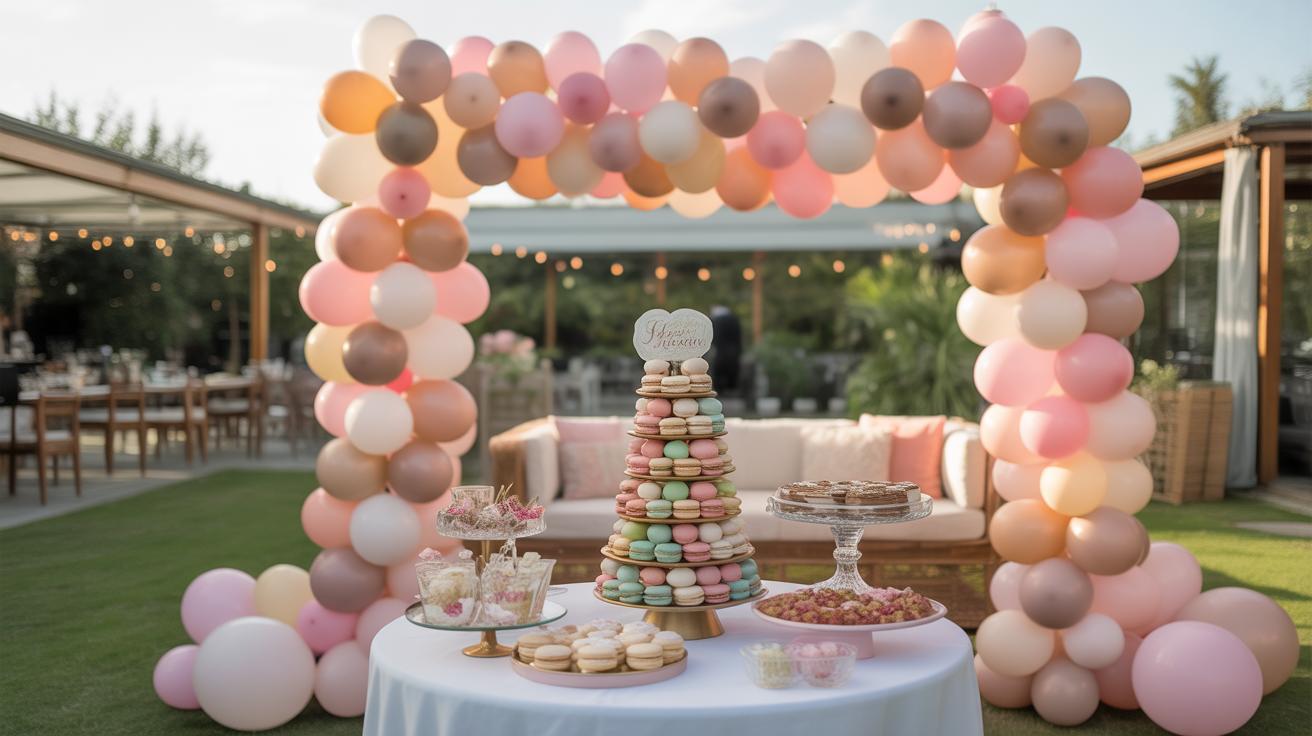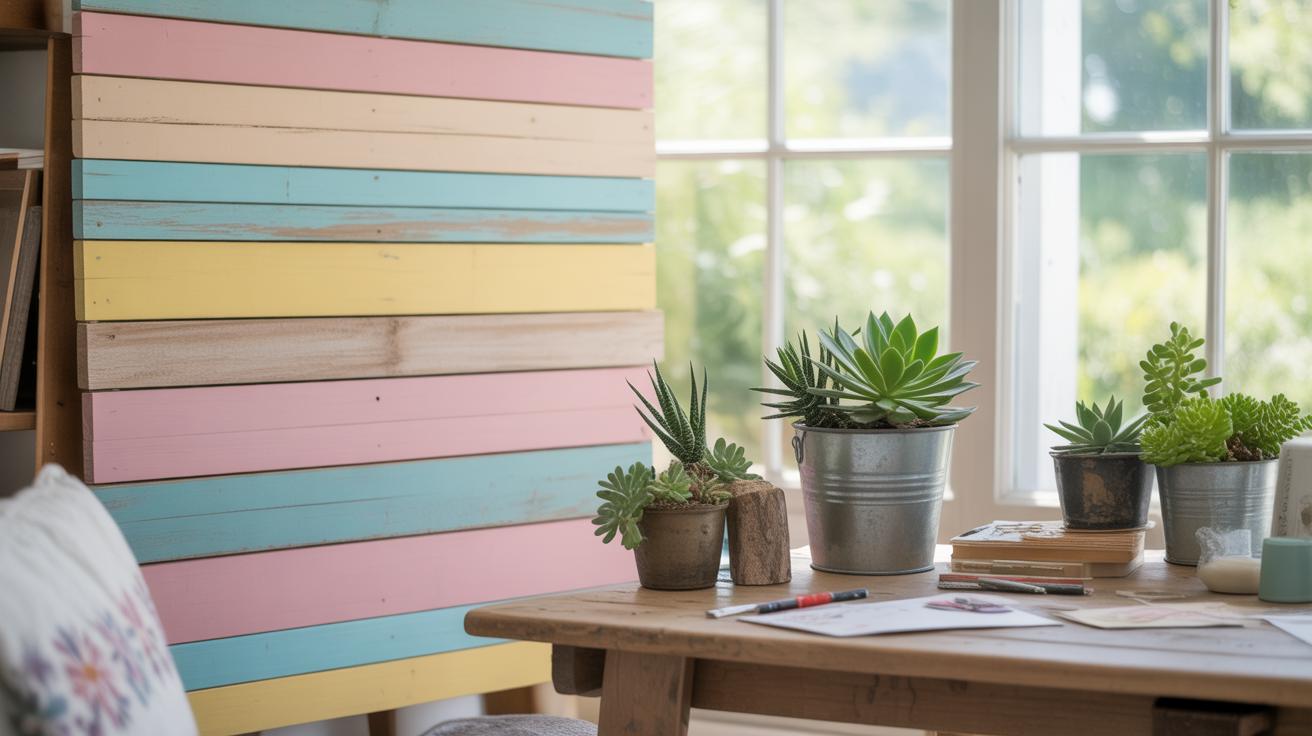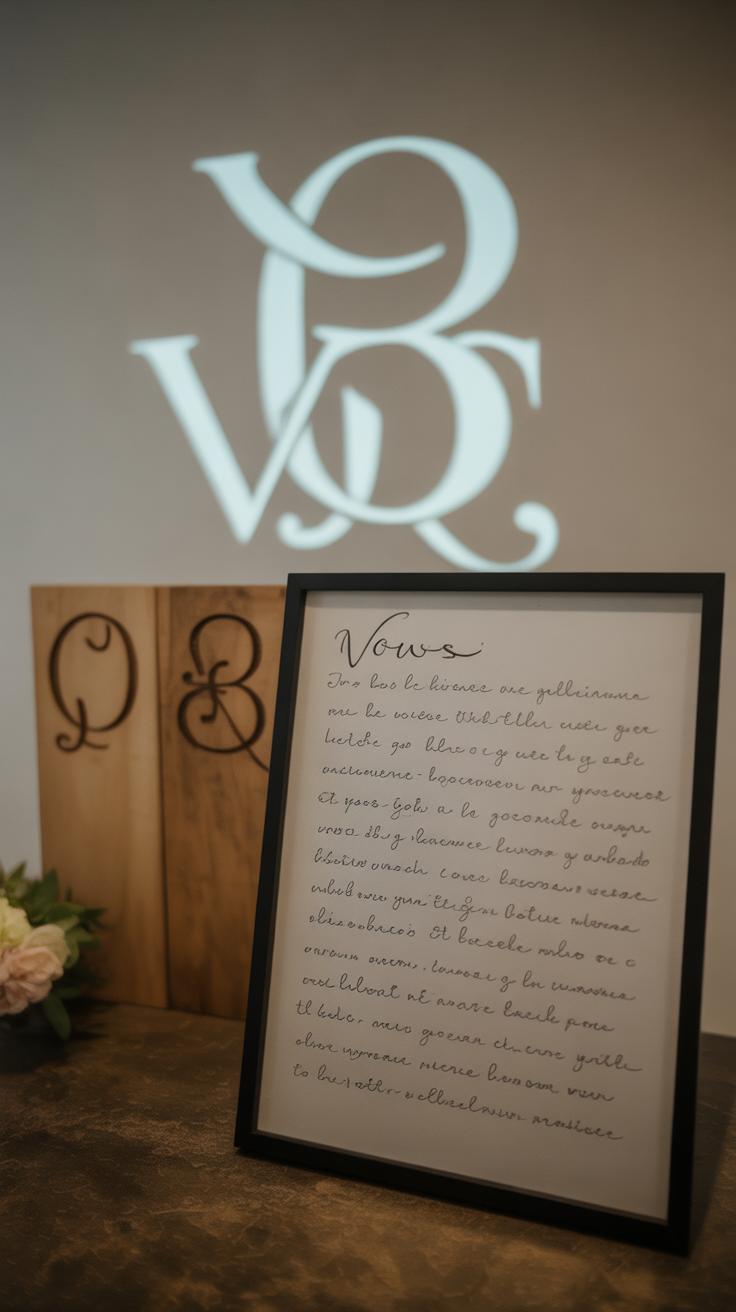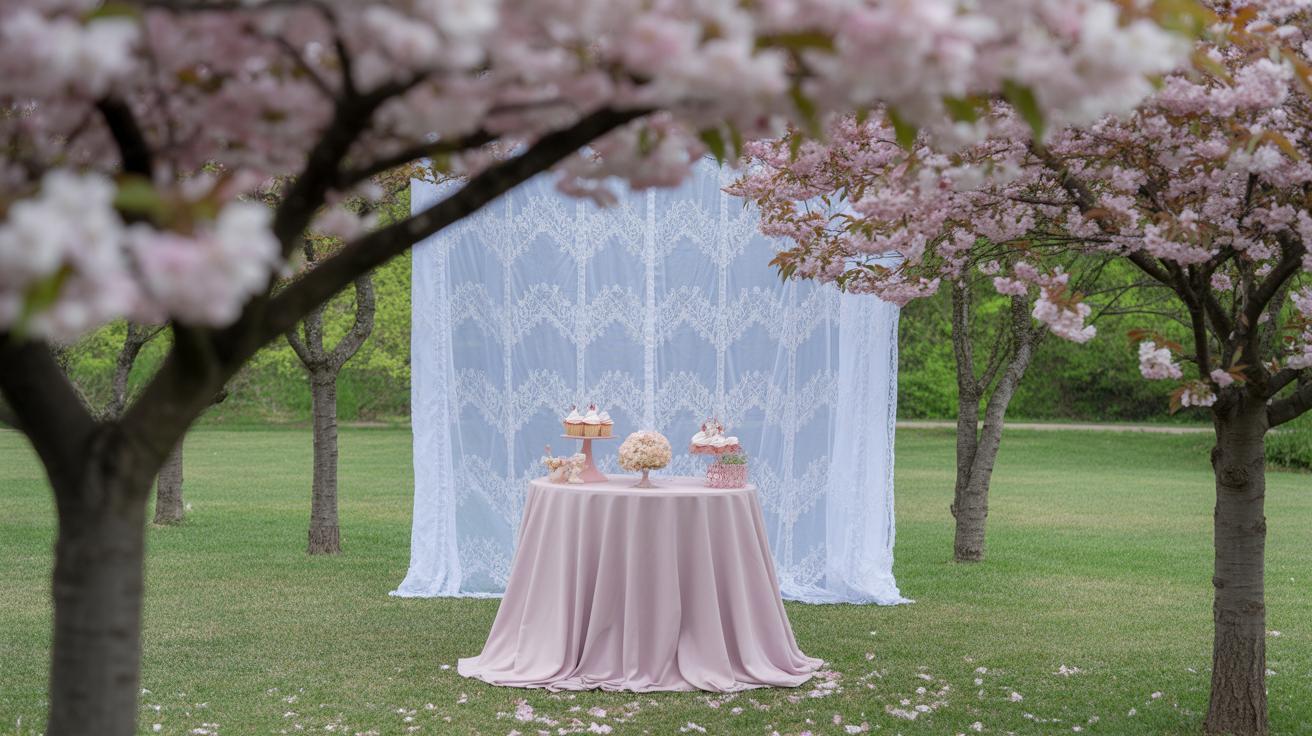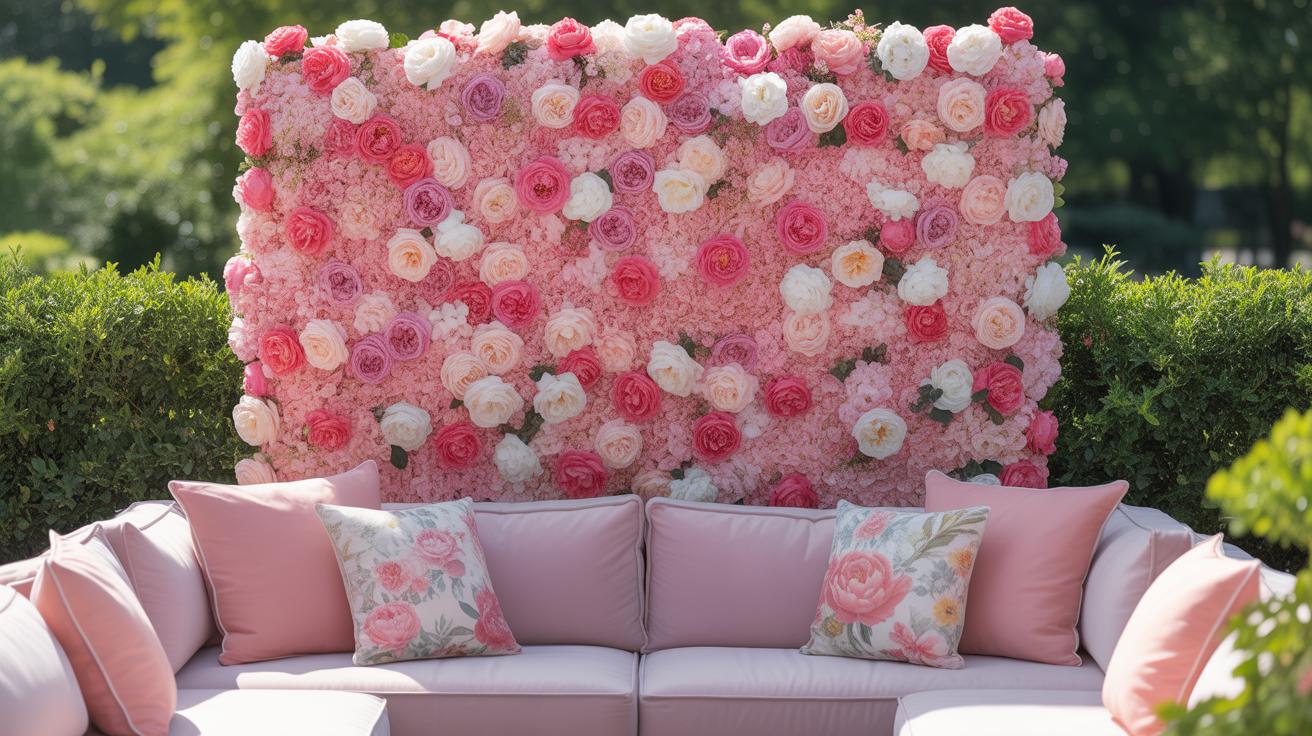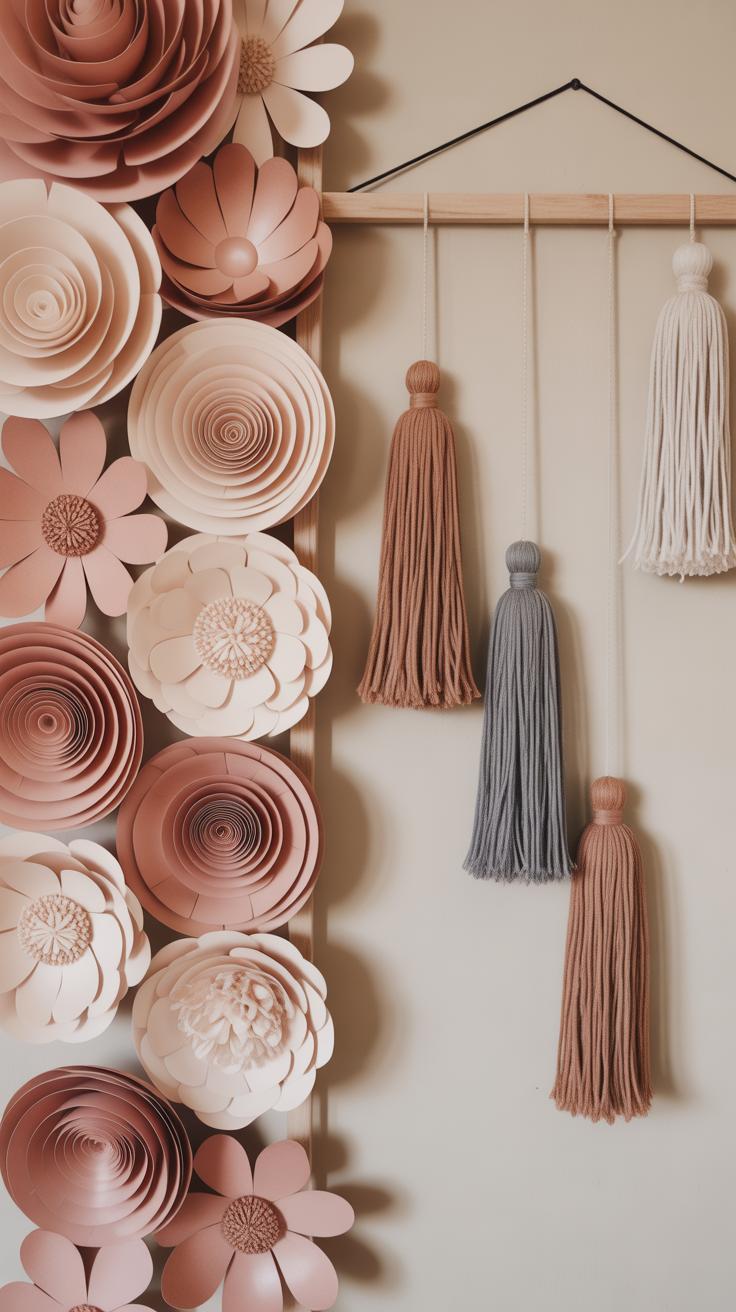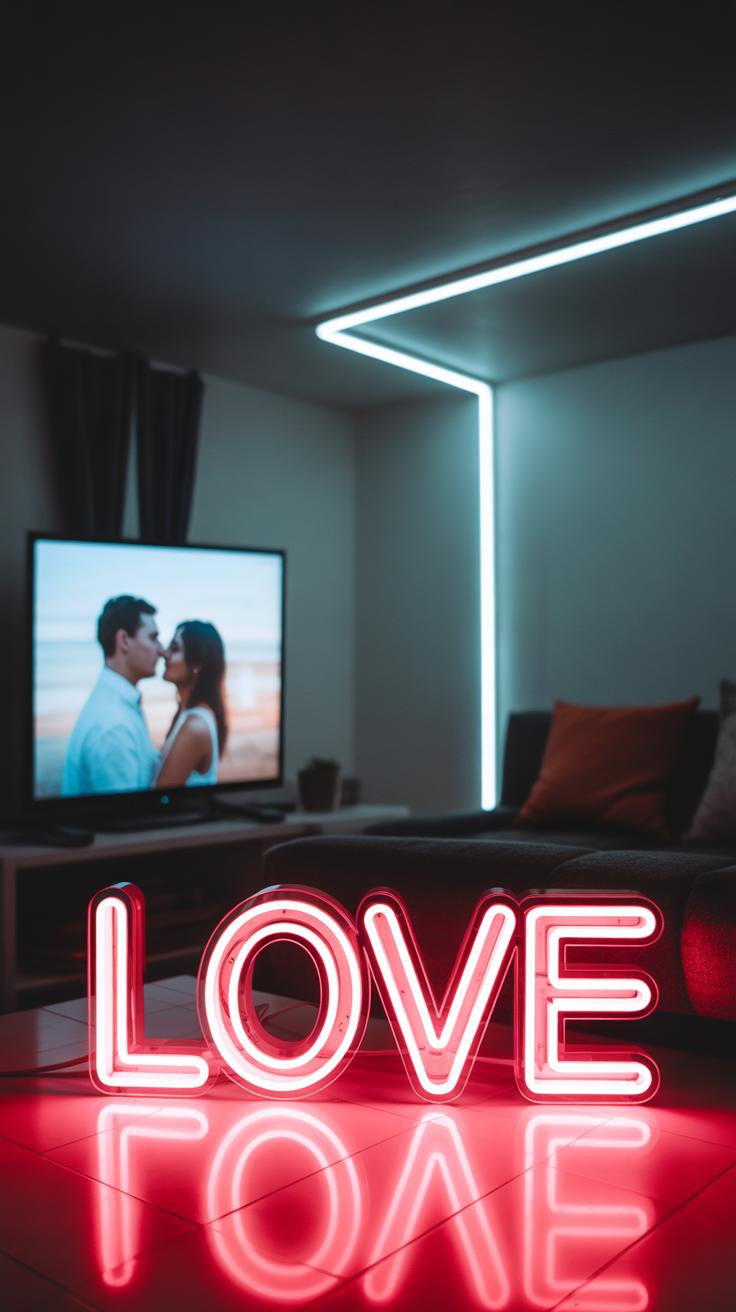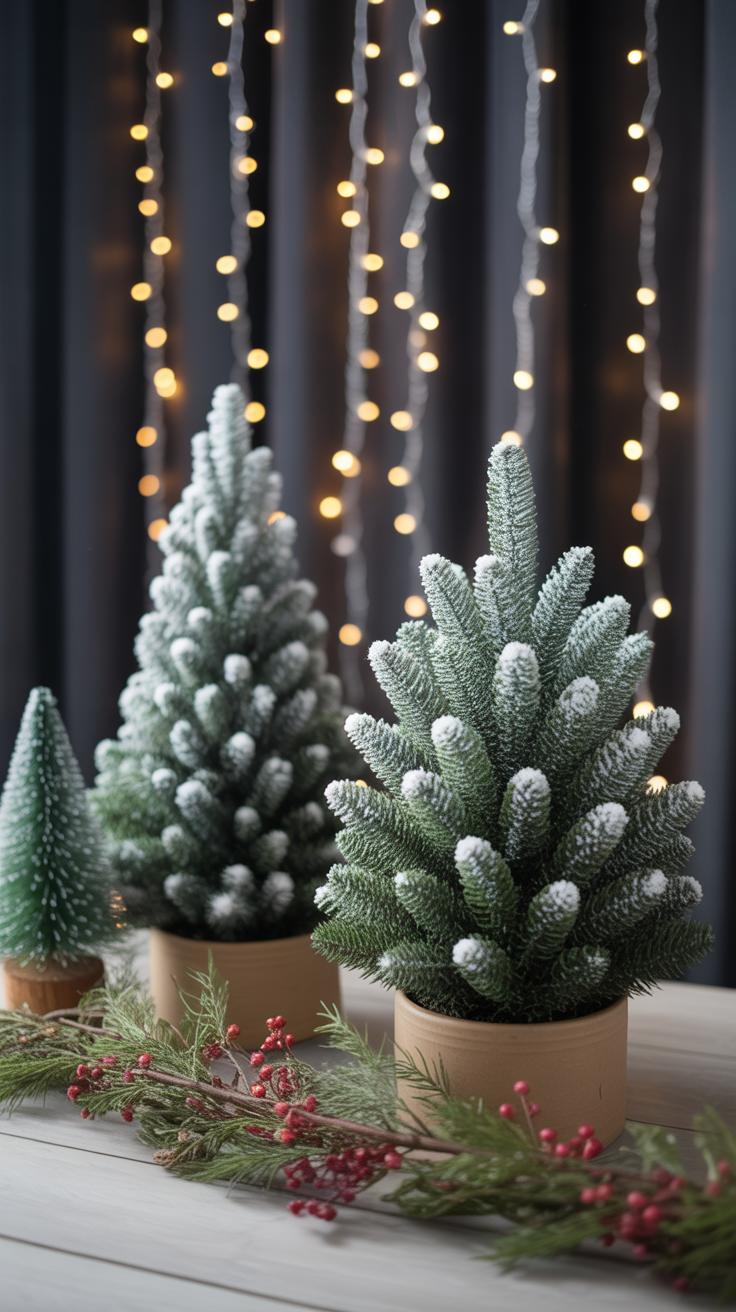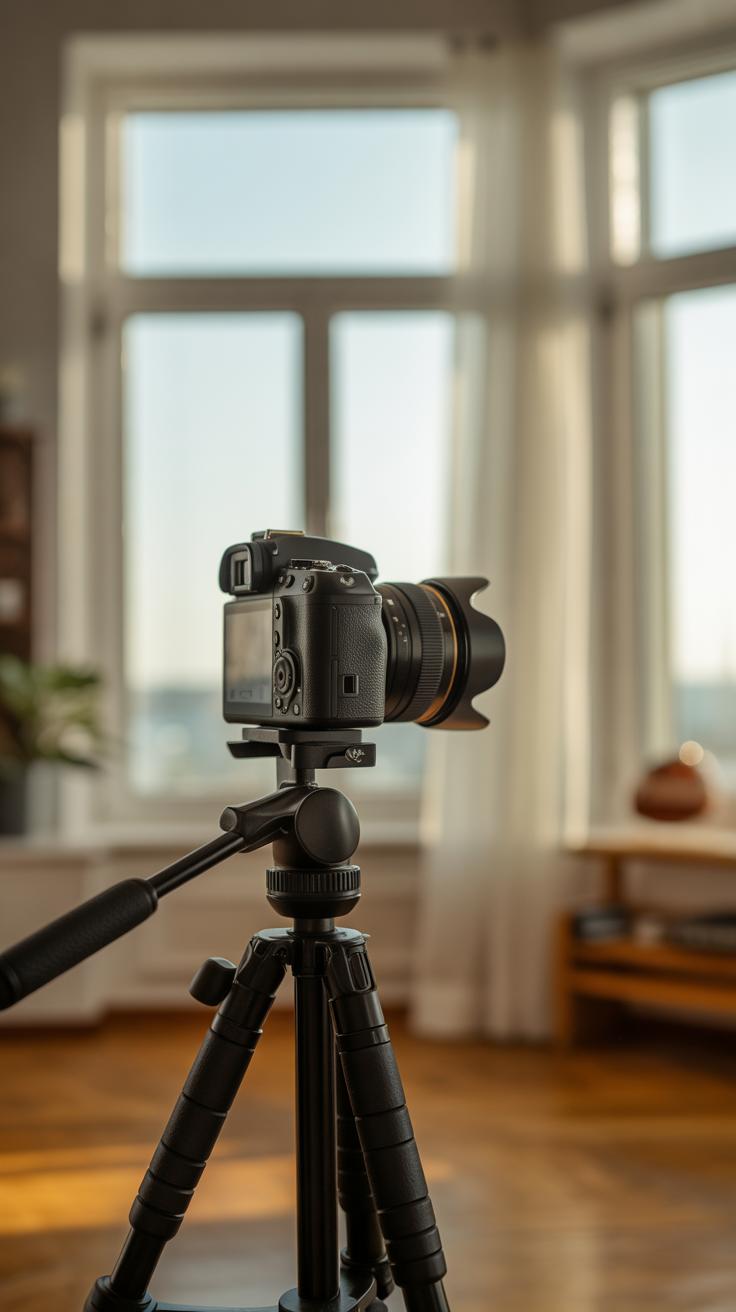Introduction
Creating the right atmosphere for your wedding ceremony and reception starts with the visual elements. One key visual component that can transform a venue is the wedding backdrop. This backdrop sets the tone and style that echoes throughout the event. It frames your photos and highlights special moments, creating memories you and your guests will cherish.
Choosing the right backdrop can feel challenging with so many options available. This article presents ideas for wedding backdrop designs to fit a range of themes, helping you to select or create a backdrop that matches your personal style, budget, and venue. Whether your theme is classic, rustic, modern, or whimsical, there are ideas here for you.
Choosing a Wedding Backdrop Based on Your Venue
The style and size of your wedding venue play a huge role in deciding what kind of backdrop will work best. You can’t just pick one without thinking about the space around it. For example, a large ballroom calls for something grand, maybe a tall floral arch or a wide installation. But a cozy, intimate room might need something simpler and scaled down to avoid overwhelming the space.
Start by measuring the area where you want the backdrop. This helps avoid surprises on the day. Keep in mind the height and width available. Also, check how natural and artificial light hits that spot during the ceremony or photos. Too harsh or dim lighting can change how the materials and colors look. You might like the idea of soft drapes, but if the sunlight shines right on them, they might fade or look washed out.
Materials matter a lot depending on whether you’re indoors or outdoors. Inside, you might lean toward fabrics, paper details, or lightweight wood. Outside, think about sturdier options like metal frames or treated wood that hold up in wind or moisture. Some couples use greenery or floral walls outdoors too, but those need careful planning to stay fresh. It’s a bit of a balancing act between what fits your style and what the venue can handle.
Indoor Venue Backdrop Tips
Indoor spaces can be tricky because you’re limited by ceiling height and wall colors. A high ceiling might allow for tall installations, but if you have low ceilings, bulky backdrops might make the room feel cramped.
Consider how your chosen backdrop color works with the walls. If the walls are dark, a lighter backdrop will pop. But if the walls are bright or patterned, a subtle, neutral backdrop might keep things from feeling cluttered.
Think about the space you have for decorations too. Sometimes it’s tempting to cram in lots of elements, but keeping the area clean helps keep focus on the couple. You might want to add some soft lighting that highlights the backdrop without casting ugly shadows. That lighting can completely change the vibe, so testing it beforehand is useful.
Outdoor Venue Backdrop Ideas
Outdoor weddings throw in a few more variables. Wind, sunlight, and even unexpected rain can affect your backdrop choice. Frames made from metal or treated wood offer sturdiness. You might consider modular designs that are easy to secure or dismantle.
Natural elements work well too—think branches, greenery walls, or floral garlands attached to a frame. They blend nicely with the landscape and feel organic. Yet, keep in mind how long flowers will last under the sun and the temperature—some blooms wilt quickly if it’s too warm.
Another idea is to use fabric panels that are weighted or tied down. These can flutter gently in the breeze, adding subtle movement. Just watch that they don’t become a distraction or interfere with photos. You might want to have a backup plan in case the weather turns. Flexibility is key outdoors.
Matching Wedding Backdrops to Your Theme
Picking a backdrop that really fits your wedding theme isn’t just about matching colors or materials. It’s about creating the right atmosphere—something that feels natural but also special, like it belongs to the day and the story you both want to tell. For classic and elegant weddings, think beyond just pretty—opt for fabric drapes in soft shades like ivory, cream, or blush. They add movement and a gentle frame around your ceremony but be mindful not to overdo it; too much fabric can feel heavy or even dated. Pair those drapes with floral garlands—roses, peonies, or gardenias often fit here—and some warm, soft lighting. String lights or vintage-style lamps can enhance that subtle glow.
Now, rustic or casual styles lean toward simplicity but don’t mistake simple for boring. Wood textures, like weathered pallets or barn doors, bring an authentic, grounded feel. Add natural greenery—eucalyptus, ferns, or wild vines work well. Sometimes, just a simple wooden frame with a few sprigs of fresh herbs dangling can feel more intimate than an ornate backdrop. If you’re going for rustic, I’d also consider the scale—too big a structure might overpower your venue, especially if it’s outdoors in a natural setting.
Beach, vintage, and modern themes deserve their own attention, of course, but even within classic or rustic categories, you might find the choices aren’t just black and white. Maybe you want rustic with a hint of elegance or classic with a bit of casual flair—mixing elements can work if you keep the focus clear.
What kind of mood do you want your backdrop to set for your guests? Thinking about that, more than just style alone, often guides the best choices.
Creative Use of Flowers in Backdrop Design
Flowers can completely change how a wedding backdrop feels—adding life, texture, or sometimes a sense of calm. Fresh flowers bring vibrancy and natural scent, which creates a fresh atmosphere that no artificial version can truly match. Yet, fresh blooms are fragile. They wilt quickly, especially under hot lights or outdoor conditions, and that can be nerve-wracking when you’re counting on them to look perfect throughout the day.
To work well with fresh flowers, consider choosing sturdy varieties like roses, orchids, or peonies that last longer. Make sure your florist arranges them with water tubes or foam to keep them hydrated. Placing the backdrop in a shaded spot helps too. But even then, timing matters—a backdrop assembled just before the ceremony often looks best.
On the other hand, dried flowers offer a rustic, mellow vibe. They don’t need water and can be prepared well in advance. The color palette is usually more muted, ranging from earthy browns to dusty pinks and creams. Dried arrangements add texture but can feel less lively, so they suit some themes better than others—like vintage or boho weddings.
Artificial flowers avoid the freshness challenge entirely. They’re versatile and reusable, often easier on the budget, and available in any color imaginable. But they risk looking plastic or flat if chosen poorly. High-quality silk flowers work well, making the backdrop consistent and stress-free, especially for longer events or destination weddings.
So, when should you choose which? Think about your venue, budget, and how important natural scent is to you. Also, how long must the backdrop last? Often, mixing all three types in one design creates an interesting visual balance—fresh flowers catch the eye, dried flowers add depth, and artificial blooms help fill in gaps without fading.
Using Light and Fabric Draping to Enhance Backdrops
Lighting and fabric can completely change how a wedding backdrop feels. The interplay between the two often sets the mood without even needing extra decor.
String Lights and Fairy Lights
Small lights like string lights or fairy lights cast a soft, warm glow that feels intimate and inviting. Imagine a simple curtain of tiny bulbs shimmering behind the couple—it’s subtle but charming. Sometimes, these tiny lights work best tucked within fabric folds, creating gentle sparkles that aren’t overpowering.
For example, wrapping delicate fairy lights around a wooden frame or weaving them through floral arrangements can soften an otherwise stark backdrop. In dimmer venues, these lights help fill the space with a natural warmth. I recall a wedding where the glow seemed to blend perfectly with twilight—almost magical but without drama.
Fabric Types and Arrangements
Choosing the right fabric can be tricky. Silk offers a sleek, slightly reflective surface that catches light differently depending on the source and angle. It lends a bit of elegance but might feel too formal for some themes. Tulle, on the other hand, has an airy, almost ethereal quality. Draped loosely, it creates soft clouds of texture that diffuse light beautifully.
Chiffon falls somewhere between the two—graceful and flowing but with a bit more weight than tulle. It catches the breeze and moves lightly, adding subtle life to a backdrop. Experimenting with layered drapes or crisscross patterns can amplify this effect.
Have you ever thought about mixing fabrics? Combining chiffon and tulle in varying opacities can add depth without clutter. And when paired with soft string lights? That’s when backdrops truly come to life—without needing anything flashy.
Incorporating Personal Elements into Your Backdrop
You want your wedding backdrop to feel like more than just decoration. It should reflect *you*—your story, your style, your connection. Adding personal touches like monograms, names, or photographs can bring that unique character into the space in ways that subtle draping or lighting might not achieve alone.
Monograms and Names
Custom signs featuring your initials or a combined monogram can make a strong visual statement. You could order wooden, metal, or acrylic letters from local artisans or online shops. Sometimes those signs even light up or feature delicate embellishments, but don’t feel pressured to go overboard; a simple font can be just as powerful.
Think about where and how to position them in your backdrop. Centered, oversized monograms draw attention immediately, while smaller name signs tucked among florals or greenery offer a softer hint of personality. It’s interesting how changing size and placement shifts the vibe entirely.
Photo Displays
Displaying photos lets guests glimpse moments from your journey together. Instead of a random collage, consider arranging them thoughtfully on string lights, wire grids, or within frames clipped onto a natural wood panel. This setup can blend seamlessly with your theme, be it rustic, modern, or somewhere in-between.
Don’t limit yourself to just engagement pictures. Including snapshots of family, friends, or significant places adds depth. But asking yourself—how personal do you want to get?—might help avoid overcrowding the design. Sometimes choosing a handful of truly meaningful images makes a bigger impact than a hundred scattered photos.
Sustainable and EcoFriendly Backdrop Ideas
When planning a wedding backdrop, choosing eco-friendly options can feel tricky but rewarding. Using natural greenery and live plants often gives a fresh and vibrant look, while cutting down waste. You might think potted plants feel less polished than florals, but they bring a certain life that cut flowers can’t match. Plus, guests often comment on how inviting and calming the green tones feel in photos.
Live plants also allow for reuse—after the wedding, you can take them home, pot them, or even gift them. Some couples have kept their backdrop plants for years, which maybe sounds overly sentimental, but there’s a genuine charm in that continuity. Think ferns, succulents, or ivy walls that work well in most settings without demanding a ton of upkeep.
Recycled and reused materials present other chances to get creative without adding waste. Pallets, old window frames, or salvaged wood become perfect backdrop bases once cleaned and refurbished. Stringing together fabric scraps or repurposed paper also adds texture and personality. Sometimes, imperfect or weathered items bring warmth and character, making your backdrop feel less like a set piece and more like part of a story—yours.
Could an old door lean behind your ceremony’s center? Or maybe you find a local artist who crafts sculptures from scrap metal? These ideas take a bit more effort but can make your backdrop memorable and meaningful. It’s not just about being green but about making choices that last beyond the wedding day and maybe changing how you think about ‘decor’ altogether.
DIY Wedding Backdrops on a Budget
If you’re looking to dress up your wedding venue without breaking the bank, creating your own backdrop can be surprisingly doable. You don’t need to be a professional or even super crafty—many simple projects deliver a big visual punch with minimal expense. Sometimes, it’s just about using what’s around or repurposing everyday items you might overlook.
Affordable materials that work well include:
- Paper flowers—cut from colored or recycled paper, these can add a delicate touch, especially when layered.
- Fabric scraps—think old curtains, scarves, or inexpensive cloth panels; they provide texture and movement.
- String lights—fairy lights or LED strands create a subtle glow that suits many themes.
- Greenery cuttings—if you have access to garden clippings, they bring freshness without cost.
- Cardboard or foam boards—great for structure or creating shapes to paint or cover.
Here’s a fairly straightforward project to try: start by framing a simple rectangle with PVC pipes or wooden dowels—both can be quite cheap. Then, drape sheer fabric loosely across the frame. On top, attach clusters of paper flowers or fabric rosettes with hot glue or pins. Wrap or weave string lights through the top edge for a little sparkle when the sun goes down.
Another idea might be to create a grid with twine stretched across a frame. You can clip on various lightweight items—polaroids, paper hearts, or even small dried flower bunches. This creates a personal, interactive wall that’s as much about your story as the décor.
Making these backdrops does take some patience, and maybe a bit of trial and error, but it’s rewarding. You might find your style evolving as you go—allow some flexibility. When you do it yourself, you can change or add bits at the last minute without sweating the cost.
Using Technology and Modern Elements in Backdrops
Technology has opened up new possibilities for wedding backdrops, letting you break away from the usual floral or fabric setups. LED screens, for instance, can transform a plain background into a dynamic canvas. Imagine having a slideshow of your favorite moments or a gentle animation playing behind you during the ceremony. It’s an easy way to add personality without cluttering the space.
LED screens also give you flexibility. You can switch the visuals throughout the event—maybe starting with a romantic video at the ceremony and moving to a more upbeat image for the reception. Of course, this depends on your venue and budget, but when it works, the effect can be surprisingly intimate.
LED Screens and Light Effects
One reason LED screens catch attention is their sharp, bright display even in daylight. They offer options beyond static imagery:
- Display a custom backdrop tailored to your wedding colors or theme
- Show live feeds or candid shots from the event, making guests part of the celebration
- Project elegant patterns or subtle movements that add texture without distraction
But keep in mind, too much movement or overly bright images can feel overwhelming. Finding a balance between bold visuals and a calm atmosphere might take some trial and error.
Neon and Modern Lighting
Neon signs and colored lighting have made a comeback in recent years. A simple neon phrase—maybe your names or a meaningful quote—can become a striking centerpiece. The glow draws attention and creates a modern vibe that feels less formal, more personal.
Colored LED uplighting or spotlights can complement this too, allowing you to set moods as the day goes on. Cooler tones for a relaxed dinner, warmer shades as the dance floor heats up. The trick is to pick lighting that enhances your theme without distracting from other elements.
Some couples have even mixed neon with natural elements, like wood or greenery, to soften the look and avoid feeling too stark. If you’ve seen a wedding with a neon heart or a glowing initial, you get how it instantly adds character without much fuss.
Seasonal Backdrop Ideas for Weddings
When it comes to wedding backdrops, the season you choose can really shape your entire design. For spring and summer, there’s something about using bright colors and fresh flowers that just feels right—almost like the backdrop itself is breathing life into the room. Think flowing soft fabrics, lightweight drapes in pastel tones or bold hues, and clusters of seasonal blooms like peonies, tulips, or wildflowers. You might want to hang floral garlands or mix in greenery for texture. Sometimes simple is better, but adding layers of petals or even suspended flower arrangements can give an unexpected depth.
For fall and winter, the vibe shifts. Rich, warm colors work best—deep oranges, burgundy, golds, and browns create a cozy atmosphere. Incorporating fall leaves, branches, or rustic wooden panels can bring that outdoorsy, earthy feel inside. Velvet or heavier fabrics help with warmth—not just visually but practically if your venue is chilly. In winter, whites and creams paired with candles or fairy lights can create a soft, ethereal backdrop. Pine, holly, or sprigs of eucalyptus offer a natural touch that balances the warmth. Sometimes mixing textures—like rough wood with smooth satin—gives a backdrop that feels less predictable.
Choosing your season’s palette and materials isn’t just about matching nature; it’s about mood, too. What kind of feeling do you want your guests to get when they glimpse your backdrop? Cozy and intimate or lively and fresh? It might help to think about which textures or colors appeal to you most—even if they don’t strictly “match” the season—and then see how those elements might still work. After all, your backdrop should feel yours, even if it leans on the season for inspiration.
Tips for Photographing Your Wedding Backdrop
Best Lighting for Photography
Lighting changes everything when photographing your wedding backdrop. Natural light can give you soft, even tones that highlight textures and colors in a very flattering way. Early morning or late afternoon—the so-called golden hours—often work best. But sometimes natural light alone either isn’t enough or is too harsh, especially indoors or in bigger venues.
Artificial lighting, like string lights or spotlights, can add warmth or drama but may also create unwanted shadows or color casts that don’t show your backdrop’s true colors. Mixing both types of light is tricky but can work if balanced carefully. It’s a matter of experimenting a bit before the big moment, as no two setups will behave identically.
What really helps is diffuse lighting—a softbox or light bounced off a wall softens edges so your backdrop’s details don’t get lost.
Choosing Angles and Timing
Angles matter more than you might think. Shooting straight on can flatten the scene, but a slight tilt or shooting from a corner usually brings out depth and texture. Don’t hesitate to walk around, crouch, or even shoot from above if possible. Sometimes the most unexpected vantage points highlight nuances you didn’t expect.
Timing your shots is key, too. Photos taken right after the ceremony often capture raw emotions framed by the backdrop’s elegance. Before the guests arrive, you get a pristine shot without distractions. Later on, candid moments in front of the backdrop—like laughter or surprise—add life to the photos, though the backdrop might not always be perfectly lit or centered.
So, when exactly you shoot depends on what story you want your photos to tell. One last tip: review some test shots early and adjust. Lighting fades, crowds move, and your backdrop deserves to be remembered well from every angle.
Conclusions
Your wedding backdrop is more than decoration. It shapes the mood and highlights your wedding style. You can tailor it to your theme with colors, textures, and elements that match your personality. Think about size, placement, and what backdrop material suits your venue for best impact.
Explore the range of options—from flowers and fabric draping to lights and unique decor items. Plan early, consider your venue’s limitations, and collaborate with your decorator or craft the backdrop yourself. Your backdrop will be a memorable part of your wedding day for you and your guests.

